GDT > Projects > Coping Panels Project
Introduction
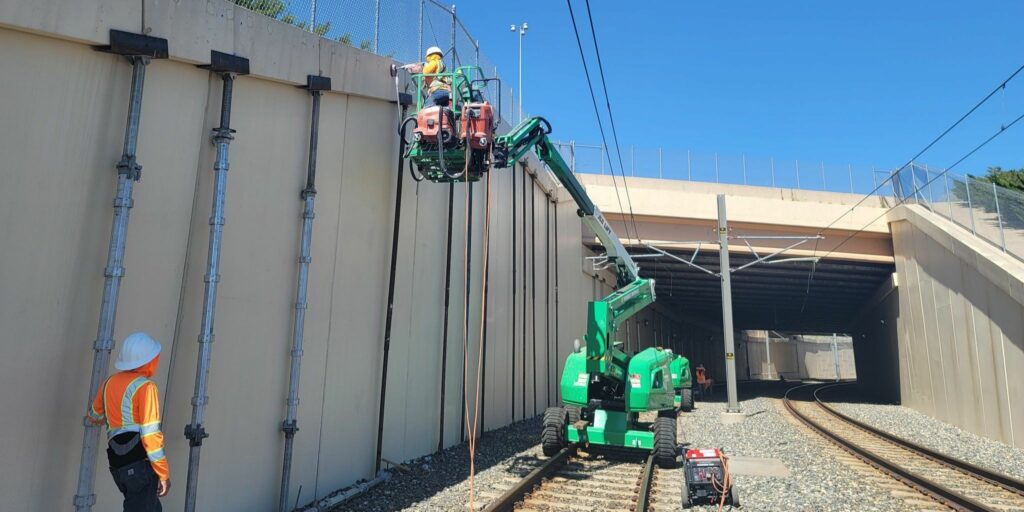
In 2022 a coping panel, which forms the ‘cap’ at the top of a retaining wall, was discovered lying on the ground at a location in the middle of the three-way junction between the E, H and R lines. Naturally the possibility of a piece of solid concrete weighing hundreds of pounds falling from height prompted concern and RTD duly undertook an inspection of all the coping panels in the area.
Inspections
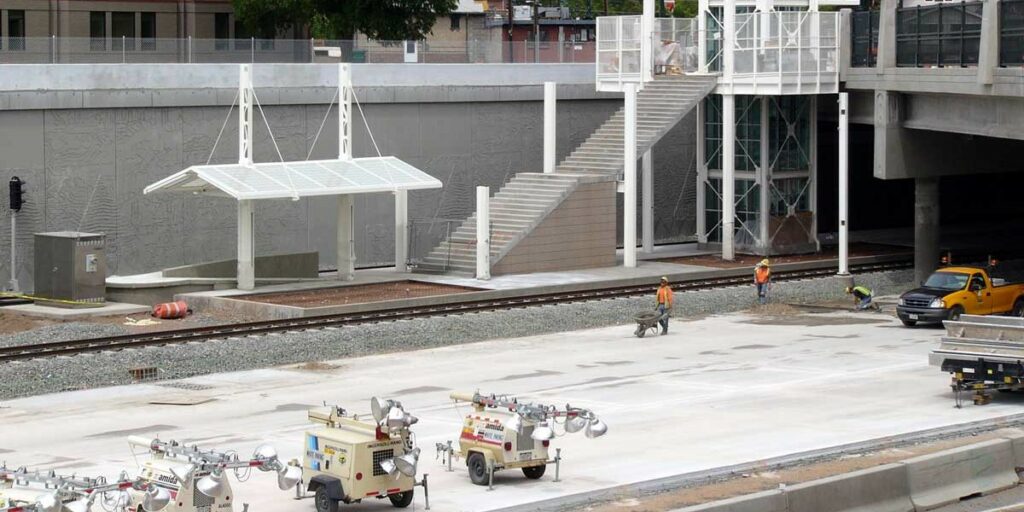
The inspections looked at all the coping panels installed along the Southeast Light Rail Corridor as part of the Transportation Expansion (T-REX) Project, which rebuilt the neighboring I-25 highway and created a two track light rail alignment. The T-REX Project involved the construction of many miles of concrete retaining walls, which featured decorative panels on the sides and coping panels along the top, all secured to retaining wall with concrete anchors.
The inspection found a number of coping panels were loose and therefore posed a serious risk of falling. In addition a number of defects were found in the original construction, and it was therefore decided that remedial action on all the coping panels was necessary.
The Coping Panel Project
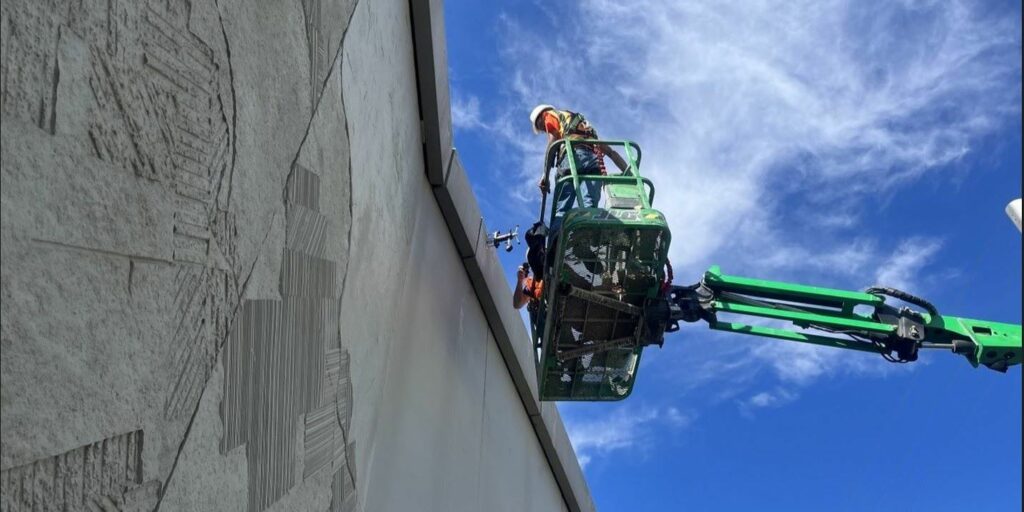
The Coping Panels Project involved installing anchors and applying sealant to the coping panels on the retaining walls. The sealant can only be applied during warm weather months, meaning the project had to be planned over two years in 2023 and 2024.
The project was separated into nine segments between between I-25 & Broadway Station in Denver and Lincoln Station in Lone Tree. To provide a safe working area for crews, single tracking was implemented with light rail trains using the nearest available crossovers to each end of the worksite.
Contractor Selection
A Request for Proposals (RFP) document was released on Oct 14th,m 20222. Two bids were received, from Hallmark Inc and Kiewit. RTD subsequently selected Hallmark, Inc as the contractor for the project.
The Work
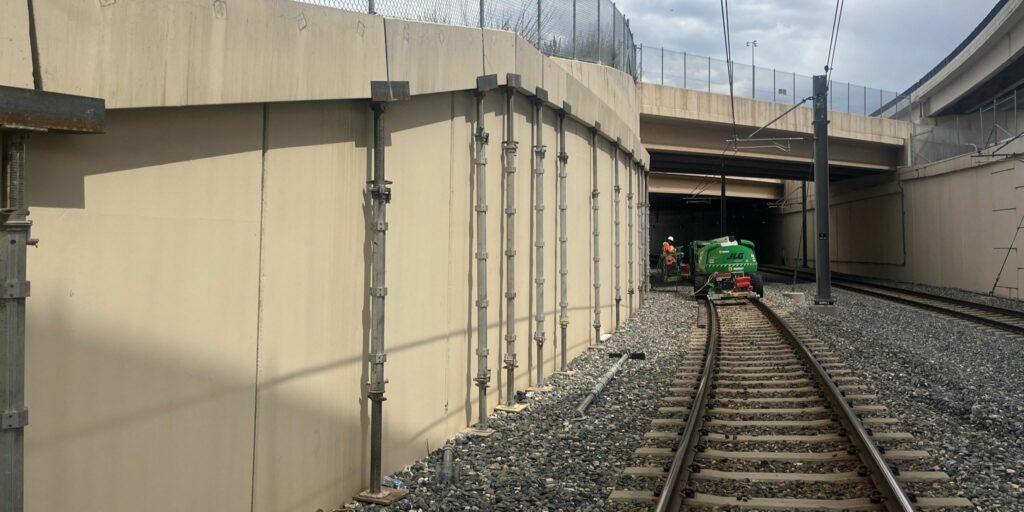
Once the worksite has been set up, the overhead catenary system (OCS) isolated on the nearest track and single-track operations implemented, the first task was to install props under each coping panel so they could be worked on.
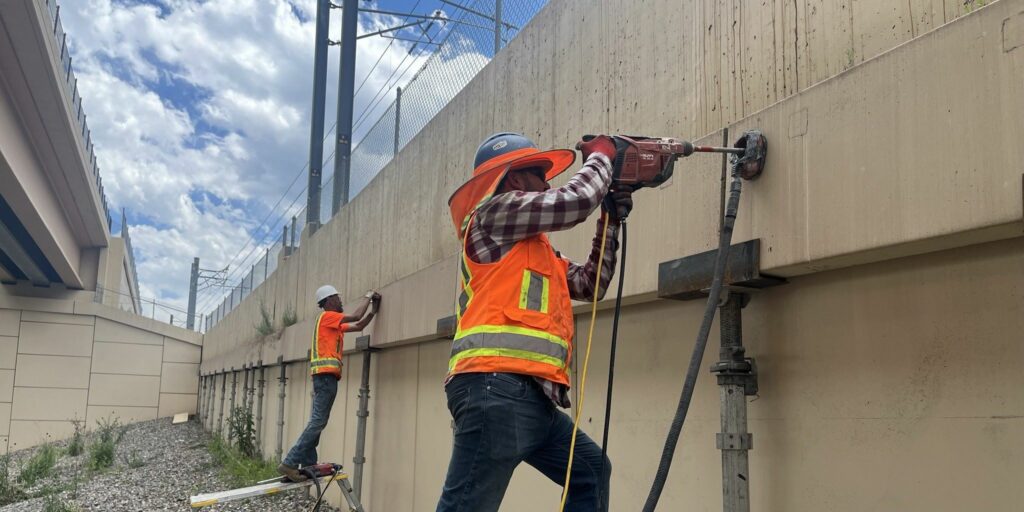
It was decided to leave the original anchors alone as they could in some instance still provide some securement capacity. New holes were drilled into the concrete and special anchors were installed to secure the coping panels to the concrete retaining wall underneath. Finally the remaining void between the anchor and the hole was sealed up with grout.
Once the grout had set, the worksite could then be taken apart and the nearest track handed back for trains to run on it again.
Phase I (April – September 2023)

The project was planned over two years, with the first phase starting on Apr 3rd, 2023 and finishing in Sep 2023.
Phase II (May – August 2024)
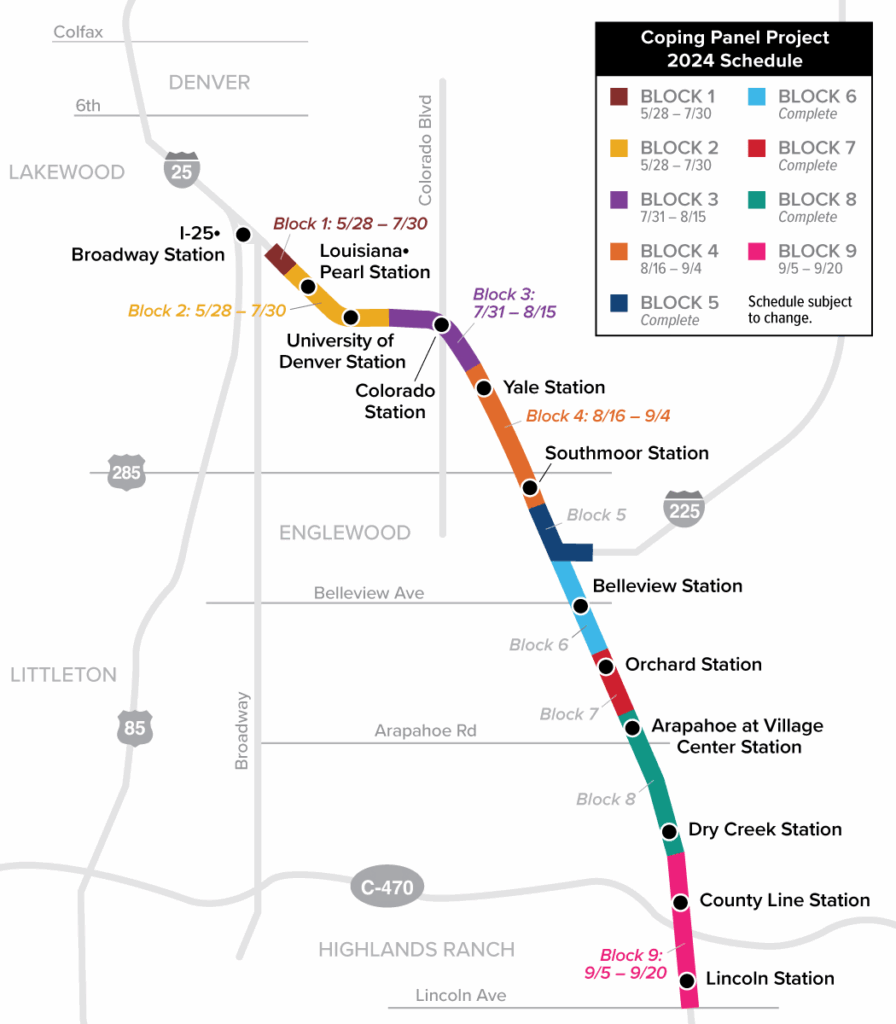
The second and final phase of the Coping Panels Project began May 26, 2024, finishing on August 22nd, 2024.
Equipment Used
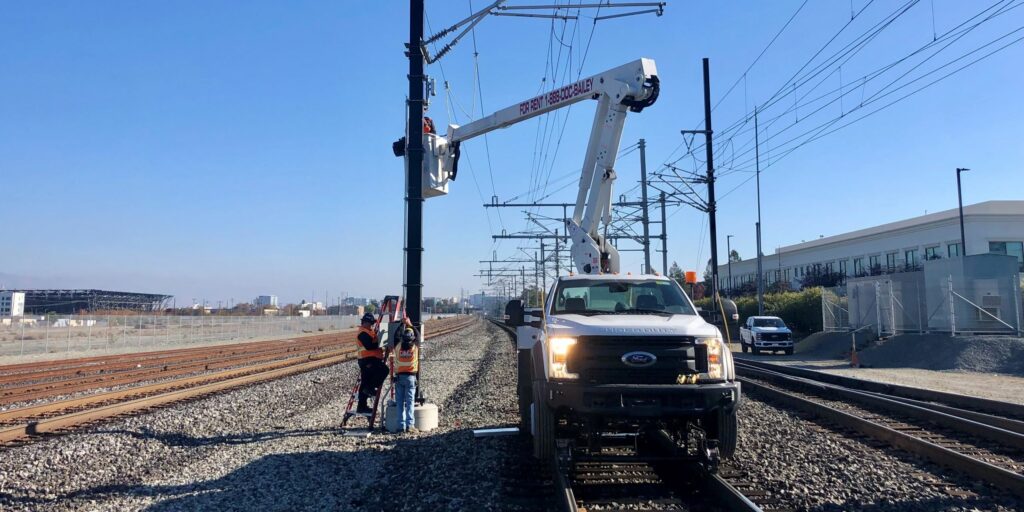
The contractor elected to use boom lifts with rubber tired wheels for the project instead of specialist ‘hi-rail’ equipment which can run on both pavement and be put on the tracks at engineer’s access points. This meant that the track needed to be closed even when the contractor wasn’t working and single-track operations had to continue 24/7 during the project. This resulted in disruption to RTD’s light rail customers at all times and not just during the days work was taking place.
Single-Tracking
Due to a lack of bi-directional signaling and automatic crossover switches on the light rail system, single-tracking proved to be labor-intensive process requiring multiple members of RTD’s maintenance-of-way (MoW) staff on site to throw switches and perform flagger duties. Because of this, train movements using the ‘wrong’ line were heavily speed restricted, something that was not fully taken into account by the light rail planners. Sadly it did not take much for the service to become heavily disrupted as trains were delayed waiting their ‘turn’ to go through the single track section. This was made all the more worse from June 2024 as the mass imposition of speed restrictions (‘slow zones’) due to the Light Rail Crisis made the schedule completely unworkable.
RTD’s low levels of MoW staffing forced the project to be suspended for a couple of days in June 2023 as recourses were needed to support the fix for the R Line SCADA failures.